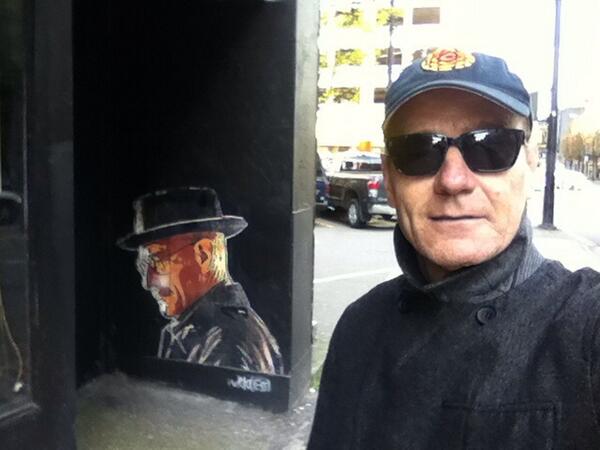Please excuse my attempt at graffiti lettering. After my last post about hyper-realism and photo-realism, I wanted to do some research on other art styles/movements/cultures. I was interested in graffiti because it's something we've all probably seen in our neighbourhoods, on washroom stalls or on our desks at schools. Like all art, it has its own expression, it's own message and it's own style and technique. This type of art is done on public spaces which makes it controversial because it is considered vandalism in many countries.
In modern times, spray paints and markers are used for most of the street art we see on buildings, walls, trains and etc. The history of graffiti can be dated as far back as ancient Rome where inscriptions and drawings were done on walls. In present days, it is also known as urban art, we see are on abandoned buildings and homes, garbage cans or obscure parts of the city. It can brighten up what once was forgotten or seen as ugly.
 |
| Graffiti on 4th Ave. Under Granville Street Bridge. Source: vancouversun.com |
Based on my research the artists (or writers) began "tagging" their names or message any public surface. While this all can be done with markers, spray paints became popular because it allowed the artist to tag their names quickly and at a large scale. This art form began to evolve and change through the decades as more artists emerged and it became competitive. It also allowed people that felt like they had no voices to get their message out there.
It can open up a dialogue for political, social and environmental conversation but it can also be very artistic, colourful and beautiful. Many graffiti artists are become more known and their art is being shared around the world and many of them even make prints and sell their art or service. Of course there are those who defame and "uglify" the city with their tags but it doesn't mean it isn't art.
 |
| Bryan Cranston next to a Graffti Portrait of Himself in Vancouver. Source: twitter.com/bryancranston |
There are a few countries and cities that allow graffiti or have areas that people can legally make their art. The thing I like about graffiti is that it doesn't have to be permanent. It captures a moment in someone's creative mind and it can reflect the current time, date, year or era. Also, since the canvas can be very large, it allows many different artists to collaborate in their community.
 |
| Cold World Media by Collective Artists in Alley on Cambie and Richards Street. Source: muralsvancouver.ca |
If you have art that you wanted to print please visit us at VancouverOnCanvas.com to start printing!

No comments:
Post a Comment